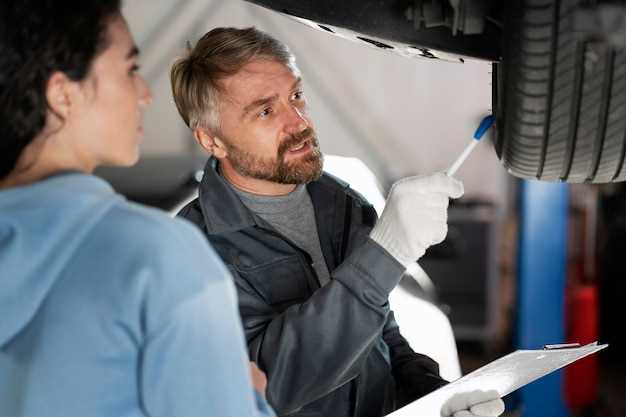
When considering the acquisition of a high-performance vehicle, thorough inspection is crucial. Performance cars, often engineered for speed and agility, carry unique features and complexities that set them apart from standard vehicles. A detailed examination can help potential buyers identify any underlying issues that may affect not only performance but also safety and overall value.
Understanding the intricate components and systems of a performance car is essential during the inspection process. From the engine’s responsiveness to the suspension’s precision, each aspect plays a vital role in determining the vehicle’s capabilities. This guide aims to equip you with the necessary knowledge and checklist to conduct a comprehensive inspection, ensuring that your investment delivers the thrilling experience you expect.
Additionally, various elements such as the car’s maintenance history, previous modifications, and overall condition will be addressed in this guide. By the end, you will be well-prepared to make an informed decision, minimizing the risks associated with purchasing a performance vehicle. Whether you are a first-time buyer or a seasoned enthusiast, being meticulous in your inspection can save you from costly surprises down the road.
Checking Engine Performance and Diagnostics
When inspecting a performance car, engine performance is a critical aspect that cannot be overlooked. An engine in optimal condition is essential for ensuring that the car delivers the power and responsiveness expected from a performance vehicle.
Start by assessing the engine diagnostics through an OBD-II (On-Board Diagnostics) scanner. This tool connects to the car’s diagnostic port and retrieves trouble codes that indicate any existing or past issues with the engine. Pay attention to check engine lights; if illuminated, it may point to underlying problems that could affect performance.
Next, listen for any unusual sounds while the engine is running. Knocking, squealing, or hissing can be signs of serious issues. Additionally, check for exhaust smoke. Blue smoke may indicate oil burning, while black smoke could suggest a fuel mixture that is too rich.
It’s also essential to evaluate the engine idle. A smooth and steady idle suggests the engine is running correctly, whereas a fluctuating idle may indicate problems with the fuel system or air intake.
Conduct a visual inspection of the engine bay. Look for leaks around seals, hoses, and gaskets. Oil or coolant leaks can be early indicators of potential engine problems that might necessitate costly repairs.
Lastly, consider scheduling a compression test. This procedure measures the pressure generated within each cylinder during the engine’s compression stroke. Consistent compression levels across all cylinders suggest a healthy engine, while discrepancies could flag the need for further investigation.
By thoroughly checking engine performance and conducting detailed diagnostics, you can make a more informed decision about the performance car in question.
Evaluating Suspension and Brake Systems

When inspecting a performance car, assessing the suspension and brake systems is crucial to ensure optimal handling and stopping power. The suspension system influences ride comfort, stability, and cornering abilities. Check for any signs of wear or leaks in shock absorbers, struts, and bushings. A test drive can reveal how well the car maintains composure over bumps and during cornering. Listen for unusual noises, such as clunks or squeaks, which could indicate underlying issues.
Next, focus on the brake system. Performance cars often feature upgraded brake components, including larger rotors, calipers, and high-performance pads. Inspect the condition of the brake pads and rotors for wear; any significant grooves or uneven wear may indicate a need for replacement. Pay attention to how the car responds during braking; it should feel firm and consistent without any pulling to one side. Test the brake fluid for contamination, as this can significantly affect the braking system’s performance over time.
Evaluate the overall setup of the suspension system, including alignment and ride height. Misalignment can lead to uneven tire wear and compromise handling. Inquire about any modifications made to these systems, as aftermarket parts can impact performance and reliability. A thorough assessment of the suspension and brake systems is essential for ensuring that the performance car not only meets your expectations but also provides safety and reliability on the road.
Assessing Exterior and Interior Condition

When inspecting a performance car before purchase, evaluating both the exterior and interior condition is crucial. Each aspect contributes not only to the car’s aesthetic appeal but also to its overall functionality and longevity.
Exterior Inspection
- Body Panels: Check for dents, scratches, or rust on all panels. Look for uneven gaps that might indicate previous accidents or poor repairs.
- Paint Quality: Inspect the paint for inconsistencies. A swirl-free finish suggests careful maintenance, while fading or peeling may signal neglect.
- Glass Condition: Examine windows and mirrors for chips or cracks. Ensure that the glass is intact and free from excessive wear.
- Tires: Assess tread depth and wear patterns. Uneven wear can indicate alignment issues or suspension problems.
- Lights: Test headlights, taillights, and indicators. All lights should be functioning correctly without any condensation inside the lenses.
Interior Inspection
- Dashboard: Check for warning lights on the dashboard. Ensure all controls are functioning properly and inspect for cracks or excessive wear.
- Seats: Inspect all seats for rips, stains, or unusual wear. Functionality of power seats and seatbelts should be verified.
- Carpets and Upholstery: Look for signs of water damage or mold. Cleanliness can indicate the previous owner’s care for the vehicle.
- Sound System: Test the audio system for audio clarity and functionality. Ensure all speakers and controls work as intended.
- A/C and Heating: Test both air conditioning and heating systems. They should respond promptly and maintain comfortable temperatures.
Thoroughly inspecting both the exterior and interior of a performance car can reveal the true condition of the vehicle, ensuring that your purchase aligns with your expectations for quality and performance.






